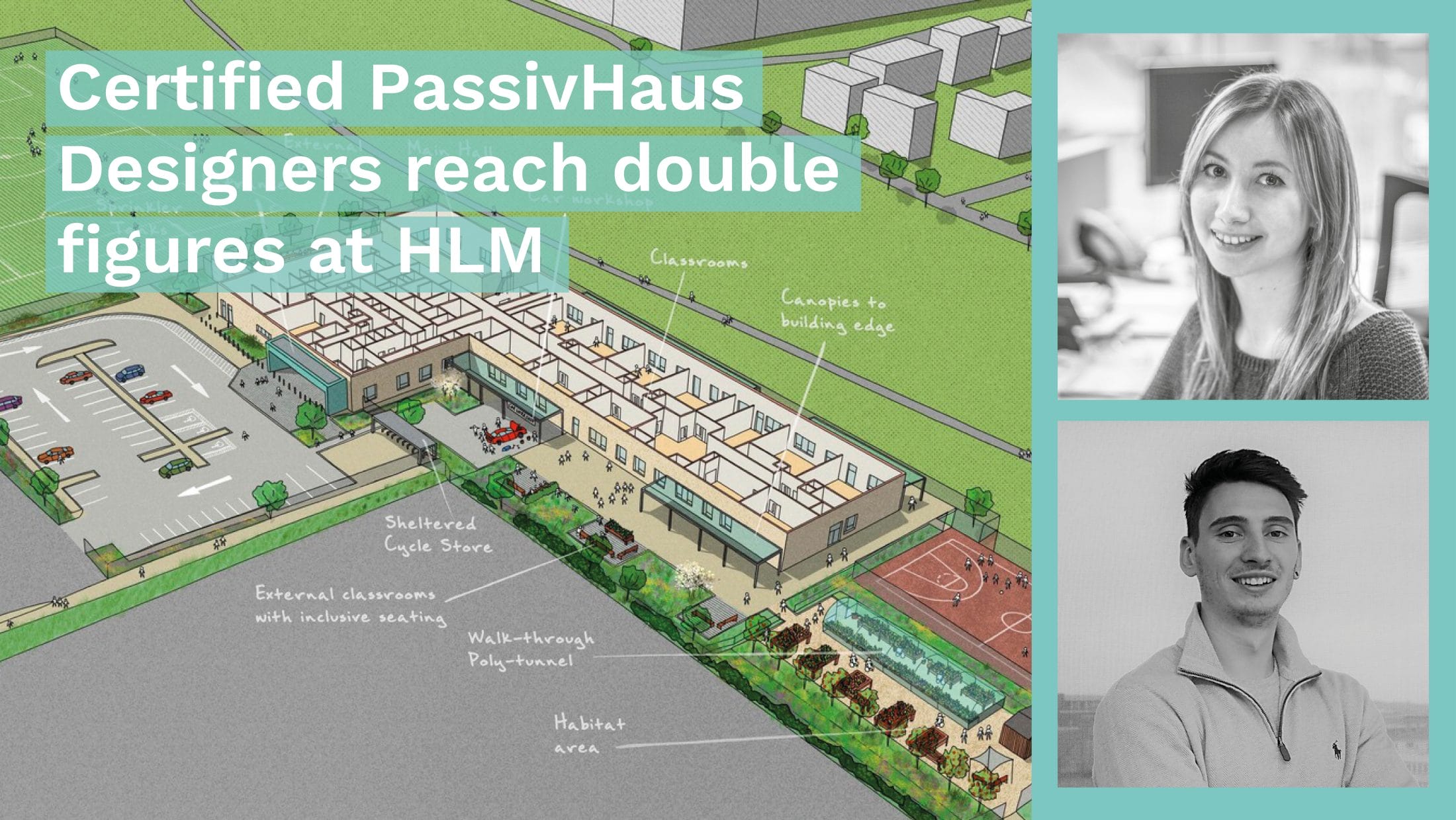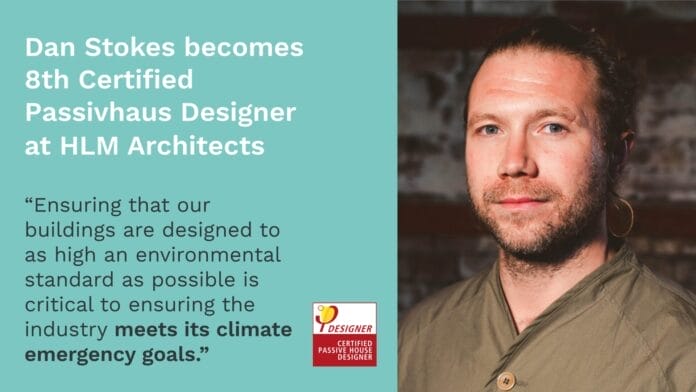
HLM’s team of certified Passivhaus Designers has reached double figures, with James Hughes and Jennifer Horne, both from the Sheffield studio, recently achieving the qualification.
It is encouraging to see such commitment from our colleagues to addressing the impact the built environment has on the climate, supporting our wider objectives. We continue to upskill our staff in areas of retrofit, PassivHaus and emerging technologies, enabling us to make great steps towards a positive, sustainable future.
In line with our commitment to both professional development and reaching sustainability goals, the PassivHaus standard equips designers with a comprehensive knowledge in how to minimize energy use while optimising natural, ‘passive’ resources. The standard, which is growing in popularity throughout the industry, prioritises high levels of user comfort, health and wellbeing, as well as having positive impacts on the wider environment.
James Hughes, Architectural Technologist, explained the merits of the course in his role:
“As a technologist, I understand the importance of high-quality building details. Sustainability is at the forefront of HLM’s and our industry’s aspirations, therefore I was keen to pursue certification as a Passive House designer. Now, I can apply the fundamentals and knowledge, not only to Passive House projects, but any project, and produce higher performance construction details, in turn reducing energy demand.
My focus moving forward is to improve construction detailing and integrate Passive House principles across our public sector projects. The Passive House standard is based on fundamental aspects such as construction methodology, for example MMC/offsite construction, while targeting principles such as thermal continuity and air tightness. The beauty is that all of these can be applied to any project, any sector, any size, regardless of whether Passive House is being targeted.”
Jennifer Horne, Architect, summarized her reasons for taking the course:
“I have always been passionate about designing buildings that are responsive to their surroundings and make the most of utilizing passive processes. As we face a climate emergency, I felt that it was crucial to further my knowledge and understanding of building performance and technology. I’m really excited to work alongside our sector teams to help embed Passive House principles within our approach to design, across all our projects.
The design process for projects aiming to achieve Passive House certification rely upon specific data inputs and calculations – it’s reassuring to have a means of driving the design development process, where our ideas and concepts can be tested and informed by solid data. Committing to Passive House as a benchmark and the high level of detail required at the early stages of design, will allow us to move towards closing the performance gap more effectively, which so often occurs between design stage proposals and the buildings when in-use.”
Head of Sustainability, Karl Brown, concluded:
“I’m delighted that Jenny and James have further bolstered our PassivHaus team. Reaching 10 qualified PassivHaus Designers in just a couple of years is a significant milestone in meeting HLM’s commitment to deliver thoughtful, net-zero carbon buildings. I know that Jenny and James are passionate about delivering low-energy, high-quality buildings that meet the needs of our clients whilst protecting our planet and I look forward to working with them to deliver new and retrofit projects to this standard.“
It is encouraging to see such commitment from our colleagues to addressing the impact the built environment has on the climate, supporting our wider objectives. We continue to upskill our staff in areas of retrofit, PassivHaus and emerging technologies, enabling us to make great steps towards a positive, sustainable future.
Related posts


